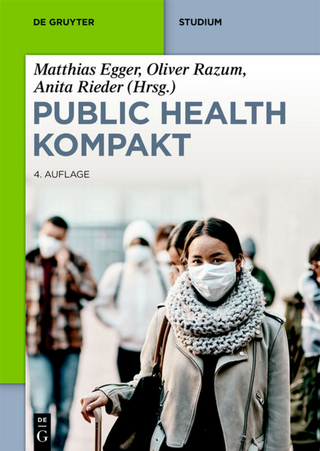
The Analysis, Communication, and Perception of Risk
Kluwer Academic/Plenum Publishers (Verlag)
978-0-306-43833-2 (ISBN)
Uncertain Temporal Logics for Risk Analysis.- Individual Differences in Risk Perception and Risk-Taking Preferences.- Technological Risk Perception: Similarities and Dissimilarities in French and American Samples.- Risk Perception and Energy Policy: A Swedish Case Study.- Dispersion of Dense Air Toxics.- Carpet/4-Phenylcyclohexene Toxicity: The EPA Headquarters Case.- Analysis of Community Risk Resulting from Rupture of a Sour Gas Pipeline.- Risk Assessment for Children Playing on Lawns Treated with a Pesticide.- Uncertainty Management in Engineering Risk Assessment.- An Approach to the Analysis of Accident Precursors.- Risk Perception and the Politics of Citizen Participation: The Case of Radioactive Waste Management.- Screening Lifetime Risks to Help Prevent Radon Exposure: A Methodology for Public Health Policy Makers.- Dose-Response Relationship Between Arsenic Inhalation Exposure and Risk of Lung Cancer.- Development of Uncertainty Factors for Nonhuman Receptors.- Addressing Uncertainties in Environmental Site Audits.- Farmworkers and Pesticide Exposure: Perceived Risk and Self-Protective Behavior.- Age-Dependent Risk Quantification Using Standard Maintenance Records.- Use of Risk Analysis on Remedial Alternatives.- Victims, Agents, and Outrage.- An Introduction to the Texas Risk Communication Process.- Risk Communication and the Cognitive Representation of Uncertainty.- Common Methodological Flaws in Risk Assessment.- Use of Risk Assessment Methodologies for Sewage Sludge Disposal Regulations.- Presentation of Risk Assessments of Carcinogens.- Exposure to Environmental Contaminants Through Breast Milk.- Cancer Risk from the Application of Newspaper to Farmland.- Alar in Fruit: Limited Regulatory Action in the Face of Uncertain Risks.- Extending Biologically-BasedCancer Risk Modeling to Apply to Benzene-Induced Leukemogenesis.- Reducing the Risk in Buying Risk Analysis Software.- Probabilistic Causality and Its Applications to Risk Analysis.- A Comprehensive Risk Analysis Example.- Public Perception and Response to the Parkfield California Earthquake Prediction.- Preliminary Analysis of Off-Normal Emissions from a Hazardous Waste Incinerator.- Estimating Emissions from Municipal Solid Waste Incinerators.- The Role of Structure-Activity Relationships in Risk Assessment.- A Framework for Computer Security Risk Management.- The Rules of the Game: What Recent Rulings Say About Courts’ and Regulators’ Differing Approaches to Establishing Causation for Chronic Health Risks.- Determinants of Severity in Acutely Hazardous Chemical Releases.- The 1988 Ashland Oil Spill: Lessons Learned Regarding Emergency Response Planning for Hazmat Releases.- Potential Uses and Abuses of Toxic Release Inventory Data.- Robust Estimation of Lung Retention in Animals Exposed to a-Emitting Radionuclides.- Dispositional Differences of 2, 3, 7, S-Tetrachlorodibenzo-p-dioxin in Rats and Humans: Implications in Cancer Mechanisms and Risk Assessment.- The Risk Analysis of Extreme Events in Queuing Theory.- On the Inclusion of Organizational and Managerial Influences in Probabilistic Safety Assessments of Nuclear Power Plants.- Risk Communication and Regulatory Culture Clash.- Bridging the Gap Between Risk Assessment by Professionals and Acceptance by Lay Decision Makers.- Acceptability of Risk: Vinyl Chloride and RCRA Subtitle D, Potential Decision Framework.- Consistent Estimates of Urethane Carcinogenic Potency Using Pharmacokinetic and Time-Dependent Models.- Carcinogenic Impurities in Food and Color Additives—An Analysis of Presumptive Risk Levels.-Decision Theory, Failure Tolerance Analysis, and Quantitative Risk Analysis —Synergistic Application to the Space Station Freedom WP-2 Program.- Sources and Consequences of Hypothetical Bias in Economic Analyses of Risk Behavior.- Establishing Communication with Brookhurst: A Case Study in Community Involvement.- Accepting New Technology: Community Relations for Mobile Incineration in Illinois.- Evaluation of Analytical Methods in Water for the Chemicals Listed Under the California Safe Drinking Water and Toxic Enforcement Act of 1986 (Proposition 65).- Use of Health Risk Estimates in U.S. EPA Activities.- The Use of Quantitative Risk Assessment in the Continuing Risk Management of a Chlorine Handling Facility.- Ozone Risk Assessment Implementation: Transferring Risk Analysis Technology to Ozone Nonattainment Planning.- Acute Ozone Exposure-Response Relationships for Use in Health Risk Assessment.- Risk-Benefit Balancing in Risk Management: Measures of Benefits and Detriments.- Risk Assessment of Soil-Related Foundation Failure.- Estimating Mine Equipment Injury Rates.- Ecological Models for Risk Assessment/Risk Management.- Science Quality and Risk Assessment: The Leaking Landfill.- Risk Assessment—Risk Management: The Need for a Synthesis.- Application of an Urban-Scale Population Exposure Model (NEM/SAI) to Ozone Exposure Assessment.- New Approaches and Tools for Quantitative Cancer Risk Assessment.- Statistical Properties of a Model-Free Approach to Low-Dose Extrapolation.- Author Index.
| Reihe/Serie | Advances in Risk Analysis ; 9 |
|---|---|
| Zusatzinfo | XII, 714 p. |
| Verlagsort | New York |
| Sprache | englisch |
| Maße | 178 x 254 mm |
| Themenwelt | Medizin / Pharmazie ► Medizinische Fachgebiete ► Pharmakologie / Pharmakotherapie |
| Medizin / Pharmazie ► Pharmazie | |
| Studium ► Querschnittsbereiche ► Epidemiologie / Med. Biometrie | |
| Naturwissenschaften ► Biologie ► Ökologie / Naturschutz | |
| ISBN-10 | 0-306-43833-X / 030643833X |
| ISBN-13 | 978-0-306-43833-2 / 9780306438332 |
| Zustand | Neuware |
| Haben Sie eine Frage zum Produkt? |
aus dem Bereich


